Overview of Sole Proprietorship and Private Limited Company
A sole proprietorship is a type of business where the proprietor also serves as the operator. The phrase “Single Individual” means “Sole Proprietor.” A proprietor is exclusively accountable for the firm’s profits and losses.Contrarily, a private limited company is a business that is completely owned by its investors.It is a distinct legal entity, and its shareholders have limited liability. The amount of shares that the shareholder owns determines the extent of their liability.A sole proprietorship cannot reap the rewards of expansion in full. Therefore, a proprietorship will need to become a private limited company. All of the advantages of a business, including greater capital, limited liability, and other advantages, may follow the conversion. Although converting a proprietorship into a private limited company has many advantages, it also results in the distribution of power and a loss of independence. In order to ensure that the decision actually results in the anticipated privileges, it must be made after carefully weighing all the relevant circumstances.
Benefits of conversion from Sole Proprietorship to Private Limited Company
There are certain benefits of private limited company that are not enjoyed by a sole proprietorship. These benefits are discussed below:
- Permanent existence or continuity: Due to its reliance on a single individual, a sole proprietorship can only survive to the extent of the proprietor’s operational capacity.Contrarily, private limited businesses are autonomous legal entities that are not restricted by the existence of a single owner.
- Liabilities are limited: A sole proprietor is solely accountable for losses, and his or her personal assets may be taken to reimburse creditors in the event of a loss. In the case of a private limited corporation, however, such responsibilities are limited by shares or a warranty.
- Increase in capital: A private limited business can receive capital from both an unsecured bond and investors. This type of corporation is regarded as a corporate entity that attracts many venture capitalists and angel investors that support and assist the company in raising additional funds and expanding its business.
- Enhanced Value in the Market: Comparing registered versus unregistered private limited companies, registered ones are more reliable. You may learn everything there is to know about setting up a private limited company on the Ministry of Corporate Affairs’ official website. The company’s brand value among customers, suppliers, and other investors rises as a result of investors, suppliers, and vendors favouring registered private limited corporations over other business organisations.
Documents required for Conversion of Sole Proprietorship into Private Limited Company
Some compulsory forms and documents are required for conversion of sole proprietorship into a private limited company. They are listed below:
- Mandatory forms:
- Form 1: This form must be filed with articles of association, memorandum of understanding and any other relevant documents.
- Form 18: This form entails the details of the office registered.
- Form 32: Information on the directors is detailed in this form.
- Important documents:
- All directors must provide a copy of their PAN card as identification.
- A copy of the Aadhar card/Voters ID (Address Proof) is required.
- Photographs of directors in passport size.
- Proof of ownership of the business location (if it is owned).
- If rented, a rental agreement is required.
- No objection certificate from the landlord if rented.
- Water or electricity bill for proof.
Criteria for Conversion of Sole Proprietorship to Private Limited Company
The following criteria for conversion of sole proprietorship to private limited company are listed below:
- A takeover or sale agreement must be signed between the sole proprietor and the company.
- “The takeover of a sole proprietorship” must be listed as a purpose in the Memorandum of Association (MOA).
- The sole proprietorship must transfer to the company all of its possessions and liabilities.
- The proprietor must have a minimum of 50% of the voting power and must maintain that ownership for a minimum of 5 years.
- Except for the amount of shares held, the proprietor does not receive any additional direct or indirect benefits.
Process for conversion of Sole Proprietorship to Private Limited Company
When the aforementioned conditions are met, the following procedure is necessary to convert a proprietorship to a company:
- Slump sale procedures: The proprietor must execute the slump sale procedures, which entail selling all of the proprietorship’s assets and liabilities to the newly created private limited company.
- Get a DSC and DIN: All private limited company directors must obtain a Director Identification Number (DIN) and a Digital Signature Certificate (DSC).
- Name availability: The proprietor must fill out Form - 1 to request the availability of a name.
- Preparation of MoA and AoA: Prepare the company’s Memorandum of Association (MOA) and Articles of Association (AOA), which outline the company’s objectives and policies.
- Application of Incorporation: Apply to the Ministry of Corporate Affairs (MCA) for the incorporation of the company.
- Submission of necessary documents
- Apply for a new PAN and TAN: The proprietor needs to do this for the newly incorporated private limited company.
- Change bank information: As part of the conversion from a sole proprietorship to a private limited company, the proprietor must lastly change the business’s bank information.
Validity of Private Limited Company
The laws and regulations of the nation where the company is registered determine the duration of time for private limited firms. Private limited companies often have a permanent existence, which means they can keep operating until they are voluntarily dissolved or by legal action. To retain the company’s status and legitimacy, certain conditions might need to be met, such as yearly filings and renewals.
Swarit Advisors Support
Swarit Advisors offers complete assistance to firms migrating from sole proprietorships to private limited corporations. Our skilled staff provides comprehensive help throughout the conversion process, addressing your individual requirements and concerns.We manage the creation of all relevant papers with precision and compliance, assuring correctness and efficiency. Our professionals will guide you through the application, name search, and reservation procedures, making the registration process easier.We are here to answer your inquiries, resolve difficulties, and provide timely updates with end-to-end service. Our dedication to faultless transfers, as well as our competence in legal advising, document preparation, and compliance monitoring, make us the ideal partner for your conversion.Swarit Advisors will manage the details so you can focus on your business. Profit from our professional assistance and a smooth transfer to a private limited business.
Frequently Asked Questions
The process includes getting a Digital Signature Certificate (DSC), a Director Identification Number (DIN), submitting an application to the Registrar of Companies (ROC), and supplying the necessary documents, such as the Memorandum of Association (MoA) and Articles of Association (AoA).
A private limited company provides limited liability protection, better access to funding and investors, greater credibility, and easier transfer of ownership.
A PAN card, a bank account, and GST registration are necessary for the single proprietor, who must also be at least 18 years old.
It is possible to convert a sole proprietorship into a limited liability partnership (LLP) or a one-person company.
Depending on how complex the company’s activities are and how long it takes to receive ROC certification, the entire process can take anywhere from 15 days to 2 months.
Yes, the single owner can continue to run the firm until the conversion isfinished.
When assets are moved from a proprietorship to a private limited company, there can be financial consequences, such as capital gains tax and stamp duty.
The required documents include the PAN card, bank statement, MoA and AoA, and various other documents related to the business.
Can a sole proprietor convert their business into a private limited company without a lawyer’s help?
No, a lawyer’s help is essential for completing the legal formalities and ensuring compliance with the relevant laws and regulations.
The private limited company will take on the obligations of the sole proprietor, protecting the business owners from limited liability.


